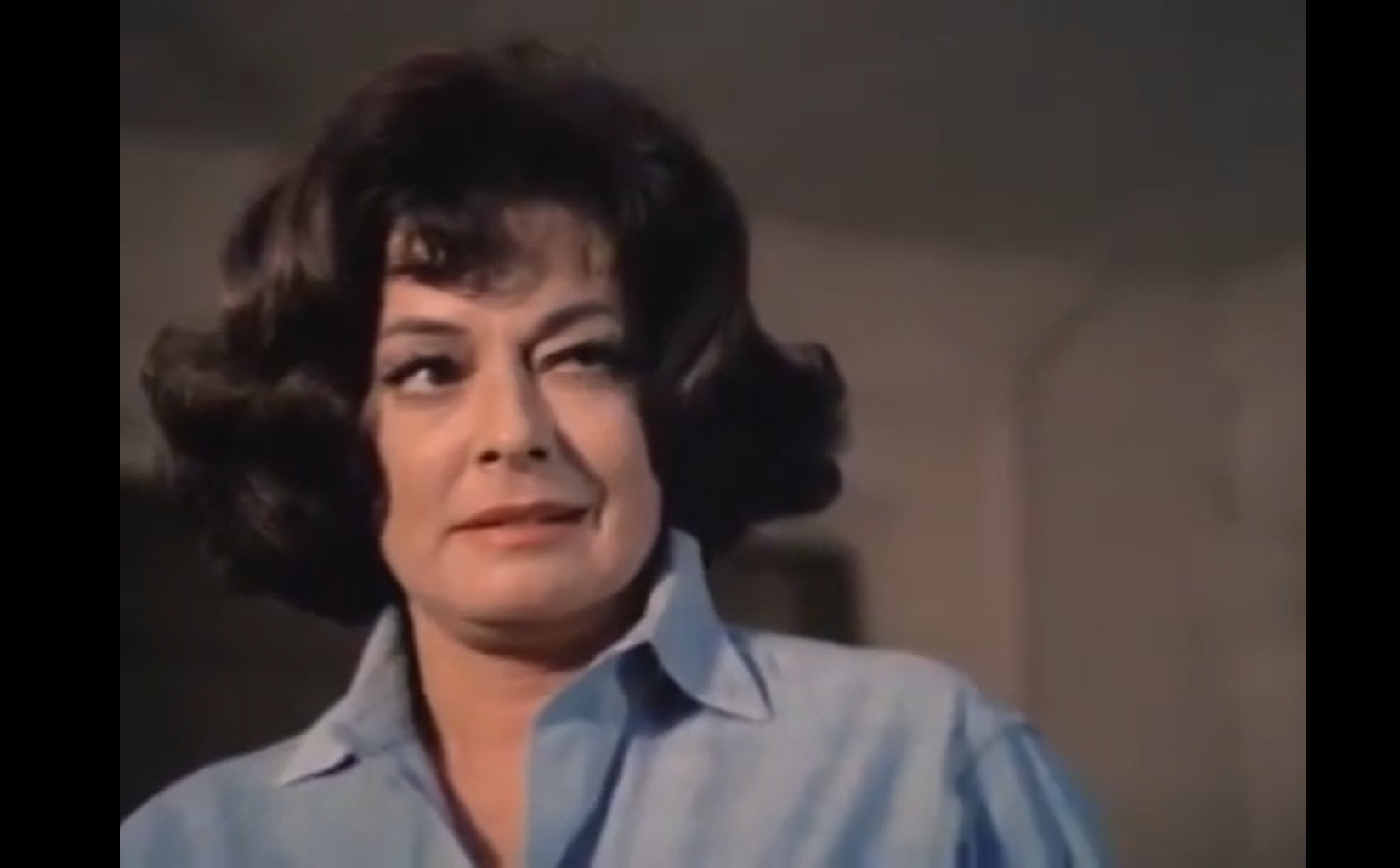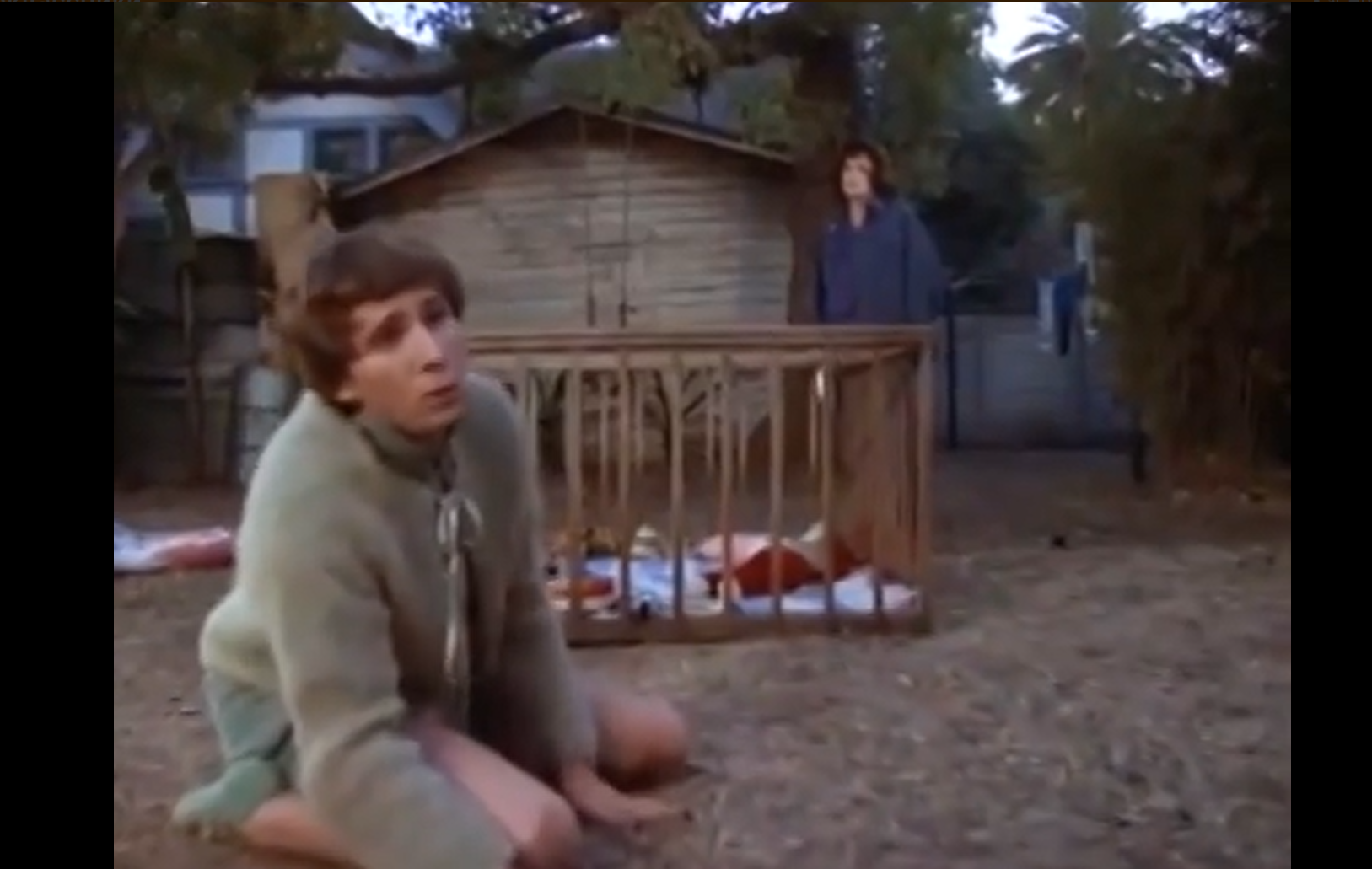|
Genres, Themes, Actors, and Directors:
- Child Abuse
- Do-Gooders
- Ruth Roman Films
Review:
Bizarre, disturbing, and patently illogical, Ted Post’s The Baby is surely one of the most unusual camp classics ever made. Viewers must suspend all disbelief while watching an adult man who still whimpers in baby squalls (clearly dubbed), and who is unable to walk despite possessing fully developed limbs:

… but once you accept this bit of illogic as part of the story’s necessary premise, it’s impossible not to be horrified — and fascinated — by what you see unfolding.
Part of what makes this cult film so utterly disturbing is watching a manipulative, psychotically abusive mother maintaining control over her object of torture for longer than just the span of childhood. (At least in Dave Pelzer’s autobiographical A Child Called “It”, the author finally escapes his nightmare existence once he’s a teenager.) For The Baby, however, there is seemingly no end to a lifetime of misery, and little that society (represented by Comer’s well-meaning social worker) can do to change things, other than taking radical, illegal action.
Reflecting back on The Baby, one immediately visualizes Ruth Roman’s hideous matriarch (Mrs. Wadsworth) strutting around in her red boots and denim or flowing caftans.

She is the embodiment of deceptive maternal concern, and Roman perfectly captures the nuances of her character’s psyche. Equally impressive are the film’s other players, including Comer as The Baby’s persistently frustrated case worker:

… Suzanne Zenor as The Baby’s bitchy blonde sister:

and David Manzy in an undeniably tricky role, but one which he nonetheless manages to pull off admirably.

Perhaps the film’s greatest feat, however, is its unexpected ending, which places the rest of the movie in a completely different light, and suggests a new universe of subjugation (albeit well-meaning) for Manzy. While The Baby is certainly not for all tastes — and even the most seasoned movie-goers will inevitably cringe while watching Manzy suckling at his babysitter’s breast:

… or Manzy’s sisters punishing him with a cattle prod — it’s definitely worth sitting through at least once.
Redeeming Qualities and Moments:
- Anjanette Comer as the do-gooding social worker, who holds secrets of her own

- Ruth Roman’s campy yet genuinely scary performance as Mrs. Wadsworth

- David Manzy’s impressively daring turn as an adult baby

- A freaky (if utterly illogical) glimpse at long-term child abuse

- A truly surprising twist ending
Must See?
Yes. This camp classic must be seen to be believed, and merits viewing by all film fanatics at least once.
Categories
Links:
|
One thought on “Baby, The (1973)”
A must, but grudgingly–it’s certainly a one-of-a-kind cult film but its power is diluted through overall sloppy execution (less in the acting department than writing/direction). I remember seeing it on tv a few years after it was released and was young enough to be entranced by its very strangeness. Then, for many years, it seemed to remain in obscurity. Now that it’s on DVD, I saw it again a few months ago. Though it’s just about as strange as I remembered it, and does have enough (I agree) to merit a single viewing, there’s also more than enough that on a second viewing makes it repetitive and tiresome. Particularly, there’s precious little in the dialogue that helps it stand alongside the best of unintentional camp classics. Neither Ruth Roman nor Anjanette Comer (who both worked mostly in tv) ever had much of a film career (though they were memorable in, respectively, ‘Strangers on a Train’ and ‘The Loved One’). First-time viewers may very well enjoy them being in full-tilt boogie mode.